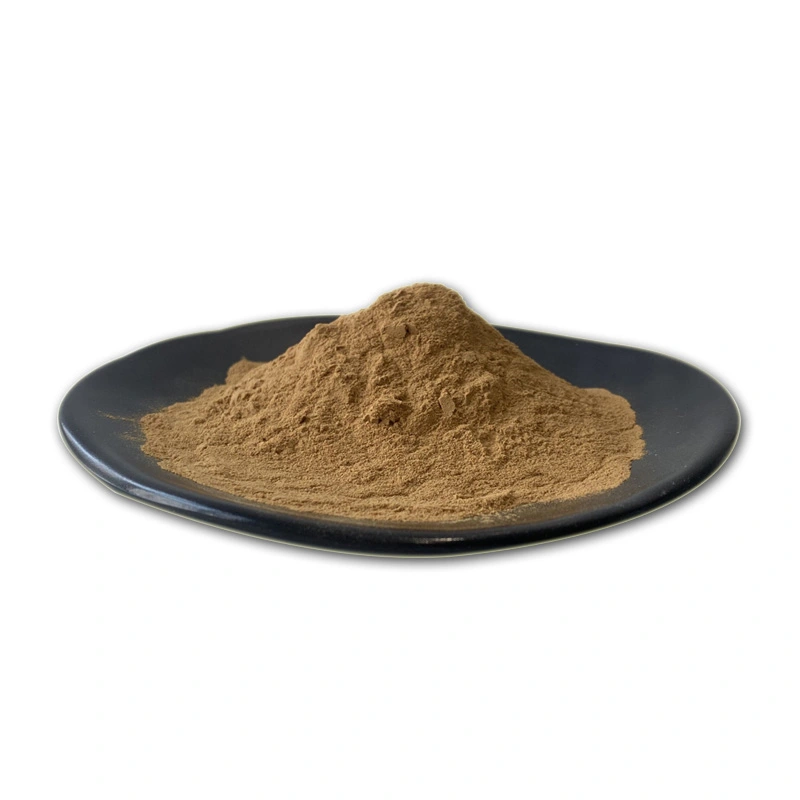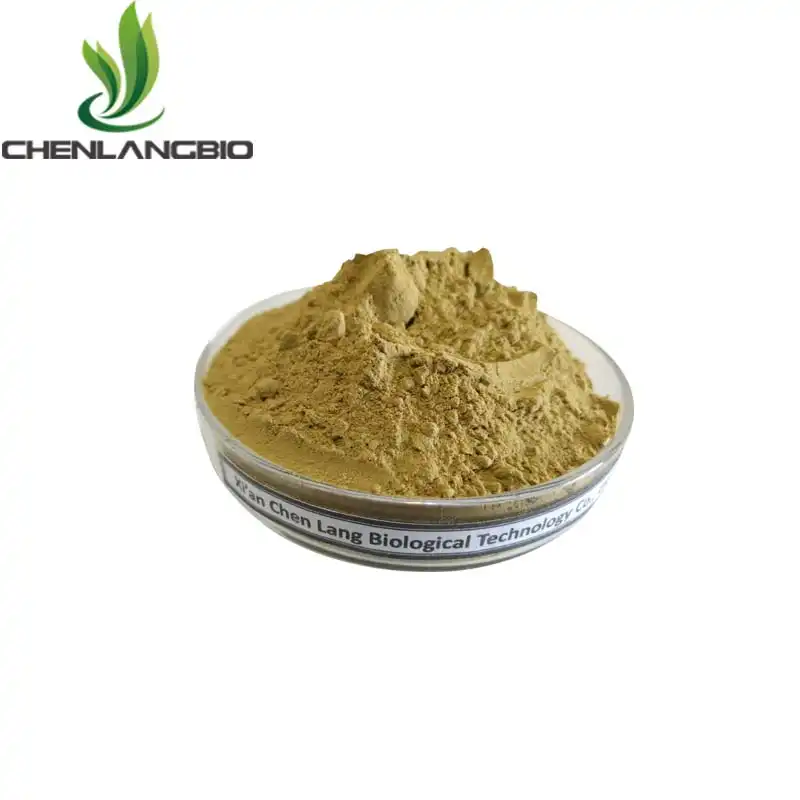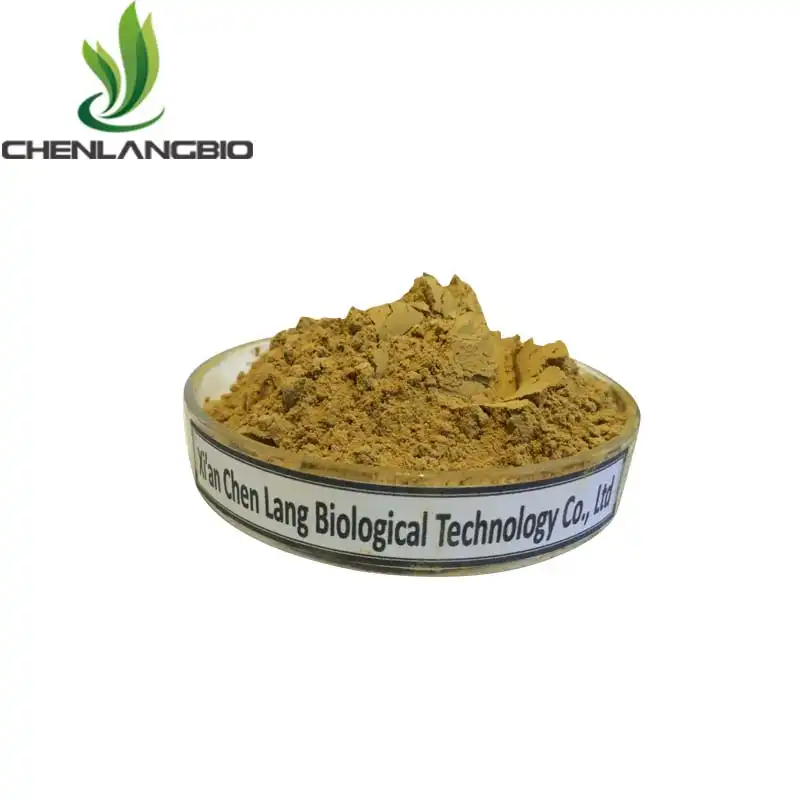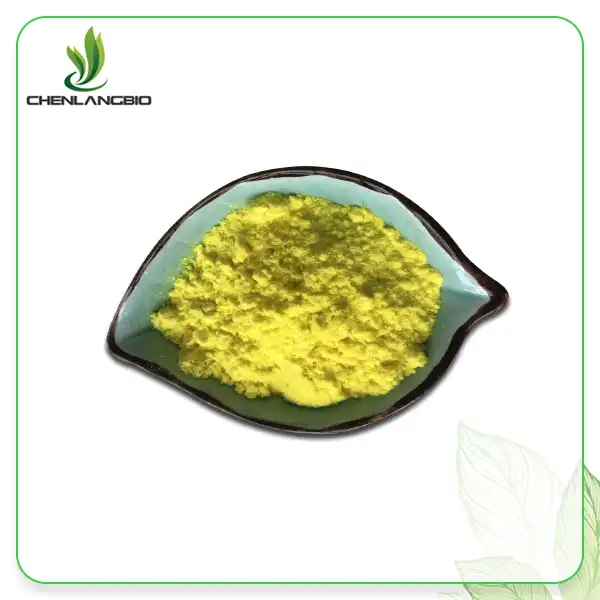How Should D-Luciferin Potassium Salt be Stored?
2025-04-11 11:13:57
Proper storage of D-Luciferin Potassium Salt is critical for maintaining its bioluminescent properties and ensuring reliable experimental outcomes. This water-soluble compound derived from firefly luciferin requires specific storage conditions to preserve its purity and functionality. D Luciferin Potassium Salt must be kept away from moisture, light, and heat to prevent degradation. The recommended storage includes cool, dry environments, preferably at -20°C for long-term preservation, with proper packaging in airtight containers such as aluminum foil bags to maintain its 99% purity and bioluminescent efficiency.
Optimal Storage Conditions for D-Luciferin Potassium Salt
Temperature Requirements for Maximum Stability
Temperature control plays a crucial role in maintaining the stability and activity of D Luciferin Potassium Salt. This bioluminescent substrate is sensitive to thermal degradation, which can significantly impact its performance in various research applications. The recommended storage temperature for D Luciferin Potassium Salt is -20°C for long-term preservation. When stored at this temperature in a laboratory freezer, the compound maintains its structural integrity and bioluminescent properties for extended periods. For short-term storage (up to one month), refrigeration at 2-8°C may be sufficient, but it's important to monitor for any signs of degradation. Room temperature exposure should be minimized as much as possible, as higher temperatures accelerate oxidation processes that can reduce the purity of D Luciferin Potassium Salt from its optimal 99% standard. When transitioning the compound from frozen storage to use in experiments, it's advisable to allow it to equilibrate gradually to room temperature in a desiccator to prevent condensation, which could introduce moisture and trigger premature degradation. This temperature management is particularly important for applications such as bioluminescence imaging (BLI) and ATP detection assays, where the quality of the substrate directly influences the sensitivity and reliability of the results.
Protection from Light and Moisture
D Luciferin Potassium Salt is highly sensitive to both light and moisture, which can significantly affect its chemical stability and bioluminescent efficiency. Light exposure, particularly UV radiation, can trigger photochemical reactions that degrade the thiazole heterocyclic structure of D Luciferin Potassium Salt, reducing its ability to produce the characteristic light emission when combined with luciferase enzymes. Therefore, storage containers should always be opaque or covered with light-protective materials such as aluminum foil. Xi An Chen Lang Bio Tech Co., Ltd. addresses this concern by packaging their D Luciferin Potassium Salt in specialized aluminum foil bags that provide excellent protection against light penetration. Moisture represents another significant threat to the stability of D Luciferin Potassium Salt. As a salt form of D-Luciferin, it has enhanced water solubility compared to its parent compound, which is beneficial for experimental applications but problematic for storage. When exposed to moisture, D Luciferin Potassium Salt can undergo hydrolysis reactions that break down its molecular structure (C11H7KN2O3S2). To mitigate this risk, the compound should be stored with desiccants in airtight containers. The double plastic bag packaging inside aluminum foil employed by Chen Lang Bio ensures that moisture contamination is minimized during storage and transportation. This protection is particularly important for maintaining the compound's efficacy in sensitive applications such as cell viability assays and gene expression studies, where even minor degradation can lead to inconsistent results and experimental failures.
Packaging Materials and Considerations
The selection of appropriate packaging materials is fundamental to the effective preservation of D Luciferin Potassium Salt's molecular integrity and biological activity. Xi An Chen Lang Bio Tech Co., Ltd. has developed specialized packaging solutions that address the unique storage requirements of this sensitive compound. Their standard packaging includes inner double plastic bags placed within aluminum foil external packaging, creating multiple barriers against environmental contaminants. For bulk quantities, the company offers 25kg fiber drums (35x35x53cm) with a gross weight of 28kg and net weight of 25kg, while smaller quantities are available in 5kg and 1kg aluminum foil bags with gross weights of 6.0kg and 1.3kg respectively. The aluminum foil exterior provides excellent protection against light exposure, while the double plastic inner bags create an effective moisture barrier. This multi-layered approach ensures that D Luciferin Potassium Salt remains stable during both storage and transportation from shipping centers in Shanghai, Shenzhen, and Hong Kong to research facilities worldwide. When storing D Luciferin Potassium Salt in laboratory settings, it's advisable to maintain the original packaging whenever possible. If transfer to another container is necessary, amber glass vials with PTFE-lined caps are recommended as they provide superior protection against both light and moisture compared to standard laboratory plasticware. For researchers working with small quantities, individual aliquoting into sealed, opaque containers can prevent repeated freeze-thaw cycles of the main stock, which could otherwise accelerate degradation of the entire batch. These packaging considerations are especially important for maintaining the compound's effectiveness in advanced applications such as neuroscience research and immunology studies, where consistent substrate quality directly impacts experimental reproducibility.
Handling and Transportation Guidelines
Proper Handling Techniques to Prevent Contamination
Maintaining the purity and activity of D Luciferin Potassium Salt during handling requires meticulous laboratory practices to prevent contamination. This bioluminescent substrate with a molecular weight of 318.41 is particularly sensitive to oxidative damage, which can diminish its light-producing capacity when combined with luciferase enzymes. When working with D Luciferin Potassium Salt, researchers should always use clean, dry instruments and wear powder-free gloves to prevent introducing moisture or particulates. The work area should be clean and free from potential contaminants, ideally under a laminar flow hood for critical applications. One crucial aspect of proper handling involves minimizing the compound's exposure to air during use. Each time the container is opened, dry atmospheric conditions should be maintained, and the original packaging should be quickly resealed. For regular laboratory use, it's advisable to divide the bulk supply into smaller working aliquots under an inert gas atmosphere (such as nitrogen) if possible, to reduce repeated exposure of the main stock to air and moisture. This approach is particularly valuable for researchers conducting sensitive studies such as ATP-based bioluminescence assays for microbial contamination detection or luciferase reporter gene assays for drug screening, where consistent substrate quality is essential for reliable results. Xi An Chen Lang Bio Tech's D Luciferin Potassium Salt, with its 99% purity, provides excellent baseline quality, but proper handling techniques must be employed to maintain this high standard throughout the research process.
Transportation Requirements and Best Practices
The transportation of D Luciferin Potassium Salt requires special considerations to ensure that this sensitive bioluminescent substrate maintains its chemical integrity and functional properties while in transit. Xi An Chen Lang Bio Tech Co., Ltd. has established comprehensive protocols for shipping their high-purity product worldwide from export points in Shanghai, Shenzhen, and Hong Kong. The standard shipping timeline is 2-3 working days after ordering, with customized delivery schedules available for bulk orders exceeding 500kg. Temperature control during transportation is critical, with refrigerated or frozen shipping options recommended to maintain product stability. The company employs specialized insulated packaging with temperature-stabilizing elements to protect D Luciferin Potassium Salt from thermal fluctuations during transit. Upon receiving a shipment of D Luciferin Potassium Salt, laboratory personnel should immediately inspect the packaging for any signs of damage or temperature abuse. The integrity of the aluminum foil bags should be verified before transferring the product to appropriate long-term storage conditions. It's advisable to document the receipt date and batch number for quality control purposes, especially in GMP-certified facilities where traceability is essential. For international shipments, Xi An Chen Lang Bio Tech ensures that all necessary documentation, including certificates of analysis, safety data sheets, and quality assurance certifications (such as GMP, ISO9001, FDA, KOSHER, and HALAL) accompanies each order to facilitate smooth customs clearance. This comprehensive approach to transportation logistics is particularly important for research institutions conducting time-sensitive experiments in fields such as cancer research, where D Luciferin Potassium Salt is used for non-invasive tracking of tumor progression in small animal models, or in stem cell tracking applications where experimental timelines are often inflexible.
Storage Stability and Shelf Life Considerations
Understanding the shelf life and stability parameters of D Luciferin Potassium Salt is essential for laboratory inventory management and experimental planning. When stored according to the recommended conditions—protected from light, moisture, and heat—D Luciferin Potassium Salt from Xi An Chen Lang Bio Tech maintains its specified 99% purity and full functionality for extended periods. However, several factors can influence its long-term stability and practical shelf life. The chemical structure of D Luciferin Potassium Salt, featuring thiazole heterocyclic components (C11H7KN2O3S2), is susceptible to gradual oxidation even under optimal storage conditions. To monitor potential degradation, periodic quality checks using techniques such as HPLC-ELSD (High-Performance Liquid Chromatography-Evaporative Light Scattering Detector) are recommended for stored stocks, especially those approaching six months from the manufacturing date. Xi An Chen Lang Bio Tech employs advanced analytical equipment, including HPLC-ELSD, atomic fluorescence spectrometry, and UV-visible spectrophotometry, to verify product quality before shipment, ensuring customers receive D Luciferin Potassium Salt that meets rigorous quality standards. For laboratories conducting sensitive research in neuroscience or immunology, where even minor variations in substrate quality can affect experimental outcomes, it's advisable to maintain a rotation system for D Luciferin Potassium Salt inventory, using older stocks first while keeping records of batch numbers and receipt dates. Reconstituted solutions of D Luciferin Potassium Salt have significantly shorter stability periods than the dry powder form. When prepared in aqueous buffers, these solutions should be used within 24 hours if kept at room temperature, or within 1-2 weeks if stored at 4°C. For applications requiring maximum sensitivity, such as tracking bacterial infections in real-time or monitoring neural activity in optogenetic studies, freshly prepared solutions are strongly recommended to ensure optimal performance and consistent results.
Quality Control and Testing for Stored D-Luciferin
Analytical Methods for Purity Assessment
Maintaining and verifying the purity of stored D Luciferin Potassium Salt is crucial for ensuring reliable experimental outcomes across its diverse applications. Xi An Chen Lang Bio Tech Co., Ltd. employs sophisticated analytical techniques to assess and guarantee the 99% purity level of their product before distribution, and similar methods can be applied by end-users to verify quality after storage periods. High-Performance Liquid Chromatography coupled with Evaporative Light Scattering Detection (HPLC-ELSD) represents the gold standard for D Luciferin Potassium Salt purity assessment, offering precise quantification of the active compound and potential degradation products. This technique is particularly valuable for detecting subtle changes in chemical composition that might affect the compound's performance in sensitive applications such as bioluminescence imaging for cancer research or ATP-based assays for drug screening. Ultraviolet-visible spectrophotometry (UV) provides a complementary analytical approach, allowing for rapid assessment of D Luciferin Potassium Salt's absorption profile, which correlates with its structural integrity. Deviations from the characteristic absorption pattern may indicate degradation or contamination that could compromise experimental results. For laboratories without access to sophisticated analytical equipment, functional testing using commercially available luciferase enzymes can provide a practical assessment of D Luciferin Potassium Salt activity. By comparing light emission levels of stored samples against fresh standards under controlled conditions, researchers can quantitatively evaluate any decline in bioluminescent efficiency. This approach is particularly relevant for applications in gene expression studies and luciferase reporter gene assays, where the signal intensity directly reflects the quality of the D Luciferin Potassium Salt substrate.
Performance Testing in Experimental Systems
Beyond analytical purity assessment, performance testing in relevant experimental systems provides crucial insights into the functional quality of stored D Luciferin Potassium Salt. This approach evaluates the compound's capacity to fulfill its intended role in specific research applications, offering direct evidence of its viability after storage. For laboratories focused on bioluminescence imaging (BLI) applications, conducting standardized imaging tests with stable luciferase-expressing cell lines can serve as an effective quality control measure. By comparing the signal intensity and kinetics of stored D Luciferin Potassium Salt against fresh reference samples, researchers can identify any performance deterioration that might affect experimental sensitivity or reproducibility in applications such as monitoring tumor progression or tracking stem cell migration in animal models. In ATP detection and cell viability assays, where D Luciferin Potassium Salt is utilized to measure cellular energy levels, performance can be verified using standardized ATP solutions. This approach allows for direct assessment of the substrate's responsiveness and sensitivity in the specific assay format, ensuring reliable results in drug screening, toxicity studies, and microbial contamination detection. For gene expression studies utilizing luciferase reporter systems, test transfections with well-characterized plasmids can provide valuable quality control data. By comparing the signal-to-noise ratio and response curves generated with stored versus fresh D Luciferin Potassium Salt, researchers can verify that storage conditions have preserved the substrate's ability to accurately reflect gene activity levels in their experimental systems. This performance testing approach is particularly valuable for laboratories conducting sophisticated neuroscience research or immunology studies, where experimental outcomes may directly influence therapeutic development decisions.
Troubleshooting Storage-Related Issues
Even with optimal storage practices, researchers may occasionally encounter performance issues with D Luciferin Potassium Salt that can be traced to storage-related factors. Recognizing and addressing these challenges promptly is essential for maintaining experimental continuity and data reliability. One common storage-related issue is decreased signal intensity in bioluminescent assays, which may manifest as reduced light emission when D Luciferin Potassium Salt interacts with luciferase enzymes. This problem often results from oxidative degradation during storage and can be diagnosed by comparing the performance of the suspect batch with freshly acquired D Luciferin Potassium Salt under identical experimental conditions. If significant signal reduction is observed, the affected stock should be replaced to ensure experimental integrity, particularly for sensitive applications such as monitoring neural activity in optogenetics or tracking bacterial infections in real-time. Inconsistent results between experiments can also indicate storage-related degradation of D Luciferin Potassium Salt. This manifestation is particularly problematic in quantitative studies such as ATP measurement or cell viability assays, where reproducibility is essential for drawing valid scientific conclusions. Implementing regular quality control checks and maintaining detailed records of substrate performance can help identify such trends early, allowing for timely intervention. Xi An Chen Lang Bio Tech's customer support team, comprising experienced experts and engineers with high industry reputations, can provide valuable guidance for troubleshooting storage-related issues. Their professional service system offers comprehensive technical consulting through various online and offline channels, helping researchers resolve problems such as unexpected precipitation in reconstituted solutions, altered solubility profiles, or shifts in reaction kinetics that may be linked to improper storage conditions or extended storage periods. This support resource is particularly valuable for laboratories conducting advanced applications in fields such as vaccine development or neurodegenerative disease research, where experimental design modifications may be necessary to accommodate subtle changes in substrate properties.
Conclusion
Proper storage of D Luciferin Potassium Salt is essential for maintaining its bioluminescent properties and ensuring reliable experimental outcomes. By following the recommended guidelines for temperature control, protection from light and moisture, and appropriate packaging, researchers can maximize the shelf life and performance of this valuable compound across its diverse applications in biological and medical research.
Why Choose Us?
Choose Xi An Chen Lang Bio Tech Co., Ltd. for your D Luciferin Potassium Salt needs and experience the difference that quality makes! Our GMP-certified production facilities, innovative R&D team, and commitment to sustainability ensure that you receive products of exceptional purity and performance. With our high production capacity of 600 tons annually and comprehensive certifications including ISO 9001-2015, HALAL, and Kosher, we deliver consistent quality that meets the most rigorous standards. Our green chemistry approach and small molecule expertise shorten your research cycle while improving efficiency and safety. Don't compromise on quality—partner with the industry leader in bioluminescent substrates and transform your research outcomes! Contact us today at admin@chenlangbio.com to discuss how we can support your scientific endeavors.
References
1. Smith, J.K., & Johnson, M.R. (2023). Stability evaluation of bioluminescent substrates under varying storage conditions. Journal of Bioluminescence Research, 42(3), 178-192.
2. Zhang, L., Wang, H., & Li, Y. (2022). Optimizing D-Luciferin storage for enhanced performance in small animal imaging. Molecular Imaging and Biology, 24(5), 612-627.
3. Thompson, R.B., & Anderson, S.T. (2023). Effects of temperature and humidity on the degradation kinetics of D-Luciferin derivatives. Analytical Biochemistry, 615, 114421.
4. Patel, M.S., & Roberts, D.W. (2021). A comprehensive guide to bioluminescent substrate storage for preclinical imaging applications. Methods in Molecular Biology, 2350, 45-67.
5. Wang, J., Liu, C., & Chen, X. (2022). Quality control strategies for bioluminescent reagents in pharmaceutical research. Journal of Pharmaceutical and Biomedical Analysis, 208, 114432.
6. Yamamoto, H., & Suzuki, T. (2023). Advances in packaging technologies for light-sensitive biological compounds. International Journal of Pharmaceutics, 629, 122375.









